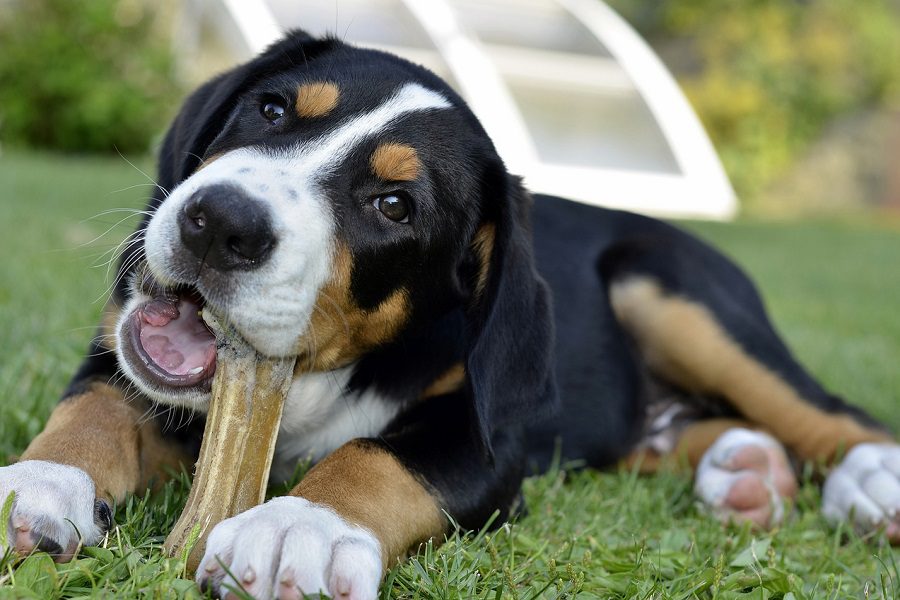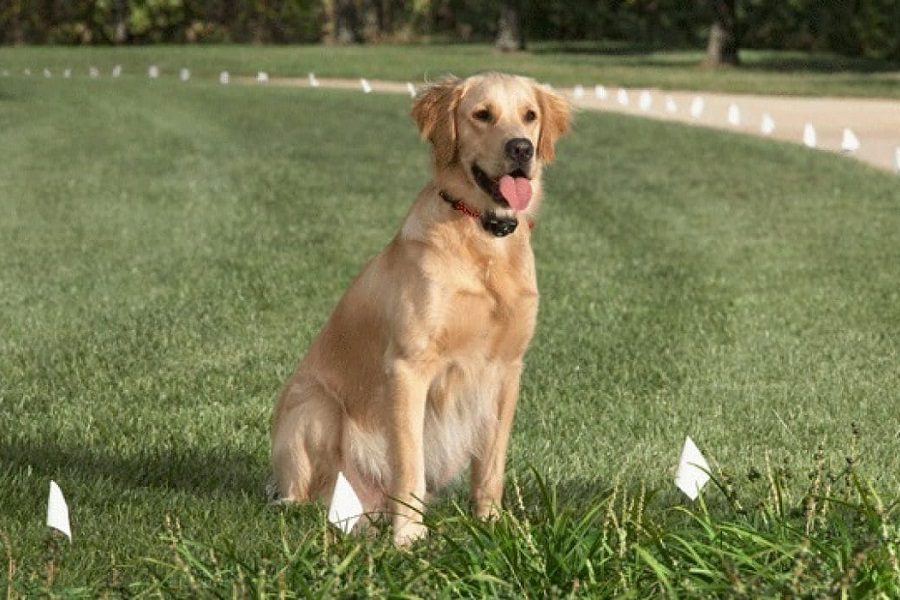Last Updated: 2 years ago
Taking your dog with you on a trip can be a lot of fun and provide great benefits for both you and your pooch.
But there are also some unique challenges and concerns that can make it seem a little stressful.
One of the most important things to consider is whether or not you have the proper dog travel accessories to make the trip safe, comfortable, and enjoyable for you and your dog.
They have special needs that will be different from yours and those of any other humans travelling with you.
In this guide, you’ll find an in depth overview of everything you need to know before going on your next trip with your dog. Learn more about the benefits you and your dog can enjoy.
Get inspired to explore new places with your dog. Learn about the unique challenges and considerations to keep in mind when travelling with a pet. And, most importantly, find out exactly what dog travel accessories you need to ensure that you have the best possible trip!
The Benefits Of Taking Your Dog With You On Your Next Trip
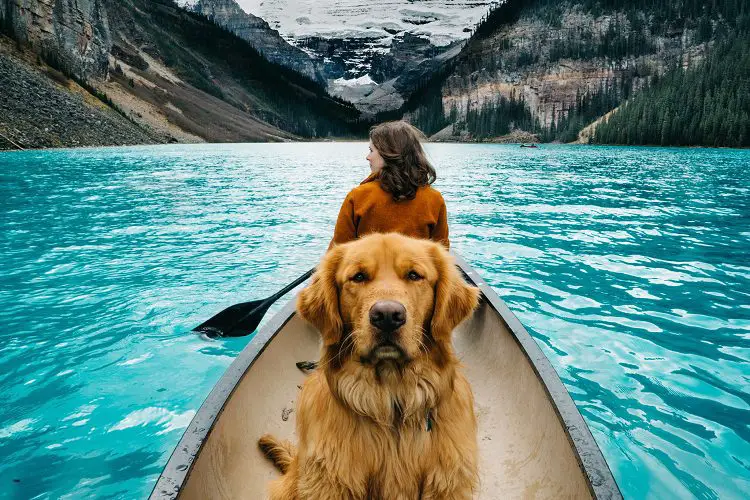
There are so many different reasons to take your dog with you on your next trip. It can be a great experience for both you and your pooch.
Here are a few of the best reasons to take your dog with you next time you want to go somewhere:
Unbeatable Bonding Experience
Traveling with anyone—human or pet—is a great chance to grow closer. Navigating an unfamiliar environment and experiencing new things together is one of the most enriching experiences that brings you closer.
You and your dog will be closer than ever after going on a trip together. This is a great opportunity to strengthen the relationship between you and your dog.
Avoid Separation Anxiety
Dogs start to miss their owners the second they leave the house. Even if they don’t have any issues with separation anxiety, they would still prefer to be with you at all times. Even if you have someone to care for them during an extended trip, they will still miss you.
So why not bring them along?
They’ll be excited to explore a new place and thrilled to be able to spend more time with you!
Great Exercise
With a dog, walking is unavoidable. And you will be more likely to go on longer walking trips to explore the place rather than taking cabs or public transport, which sometimes have annoying restrictions for pets.
Plus, your dog will be particularly excited and eager to explore, so they will beg you to walk as much as possible. This is lots of fun for them and a great way to burn off those extra calories from the delicious new foods you are trying!
Travel Safer
Your dog can be a pretty helpful crime deterrent when traveling to new places.
If you’re wandering the crowded streets of a new city, the risk of being pickpocketed is very high. But a pickpocket is less likely to target someone with a dog for two reasons:
- Dogs are a threat. Even a small dog can bark or bite, scaring the pickpocket and keeping you alert. Pickpockets aim for the easiest possible targets. And as someone with a dog, you are definitely not the easiest target.
- Walking a dog helps you blend in – Since tourists don’t often bring their dog with them on trips, the simple fact that you are walking with your dog will make people mistake you for a local who is simply taking your dog out for a routine walk. Pickpockets will assume you’re just another local (meaning they will assume you aren’t loaded with valuables worth stealing).
Dogs Are A Remedy For Jet Lag
This is especially helpful on long trips where jet lag is an issue. It can be tempting to sleep in and ruin your schedule on the first day. But your dog is going to be more motivated to wake up bright and early. And they will always need to be fed and walked.
This forces you to fight the jetlag and go explore the place you travelled across time zones to see!
Great Places To Go With Your Dog
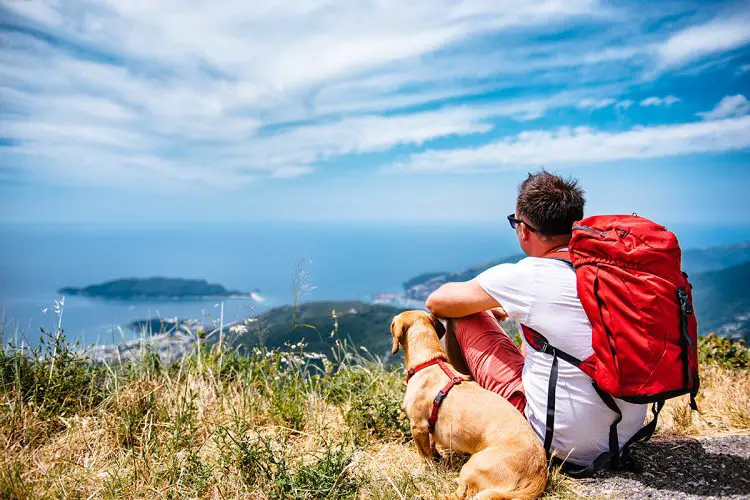
Sometimes, planning a trip with your dog can seem like a lot of extra hassle.
You have to find places that are dog-friendly. You have to bring extra dog travel supplies. But, in reality, it is not that much extra effort.
Once you’ve got the accessories you need, you are set for every trip you want to take. And there are also lots of places that you can go with your dog that are pet-friendly. Here are a few ideas to get you inspired:
Hiking & Camping
This is one of the best options for traveling with a pet. Your dog will love exploring the great outdoors and will motivate you to get active and explore yourself.
It’s also one of the most pet-friendly options you have since most campsites and national parks let you bring dogs with you.
You’ll find way less restrictions here than you would in hotels and apartments in a city. And it’s a great way to escape the fast-paced, stressful life of a city.
You can get some much needed relaxation and exercise. And you’re dog will find no shortage of things to occupy their interest.
Travelling Abroad
If you’re planning a trip abroad, why not take your pooch with you? It might seem a little impractical, but there are many benefits to doing so. And it’s much more enjoyable for your dog to go traveling with you than to stay at home or stay in a dog hotel while you’re away.
They’ll be happy that they can spend more time with you, and they’ll have fun experiencing all the new sights and smells of a new city. Plus, they’ll keep you active and help you fight jet lag, as we mentioned above!
Work
It might sound odd, but taking your dog with you to work can actually be a great experience for you, your dog, and your coworkers!
Studies show that bringing a pet to the office can be a great boost for morale and keep employees motivated. It helps decrease stress and foster a more collaborative teamwork environment.
So if you think your boss might not be so open to the idea, just show them all the great benefits that your dog can bring!
Bringing your dog to the office is also a great thing for your dog. This way, they don’t have to spend hours alone at home waiting for you to get back. They can be with you throughout the day. This will help prevent separation anxiety.
A note of caution: if your dog is not well-trained and obedient, this may not be a practical option.
But if you have given them the proper obedience training and know that they can be calm and respectful in your work environment, it’s a great way to bond with your pet and make the workplace that much more enjoyable!
The Challenges Of Traveling With Your Dog
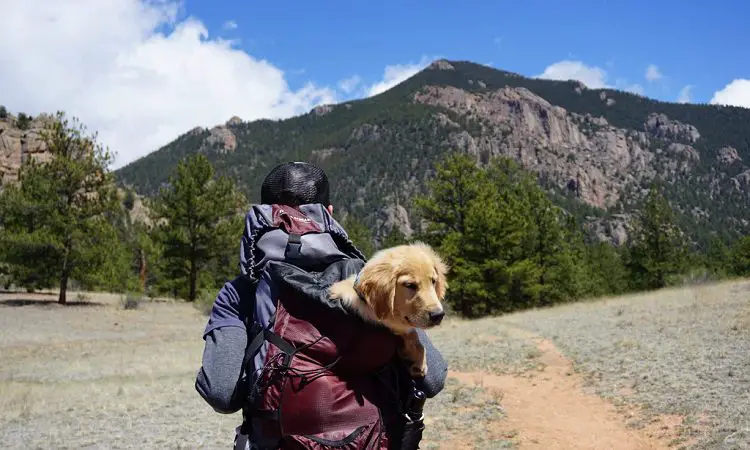
While there are a lot of benefits to taking your dog with you when you leave home, there are some challenges that you need to keep in mind. If you’re traveling abroad, for example, you’ll have to look into pet travel restrictions and consider how your dog will deal with long flights.
You also want to make sure to book early if you are taking a plane because airlines usually limit the number of pets allowed on a flight.
And if you have to fly them in the cargo hold, you should make sure that your dog makes it on the plane. It’s one thing to land and find out your luggage didn’t make it. It’s another thing to find out that your pup is lost in transit!
But the main challenge is making sure that you have all the right accessories to ensure a safe and comfortable experience for your pooch.
So, in the following sections, we will take a look at the different kinds of accessories you need and give you some tips for making the most of your trip.
ravelingg With Your Dog By Car
Going by car is one of the easiest ways to travel with your dog. You don’t have to deal with the same restrictions as a plane. And you have more room than you do on a bike or motorcycle, so there’s no issue with storage or keeping your dog secure.
The dog car accessories that you need will include:
- A dog carrier for the car: Some dogs will do fine just sitting in the car without a carrier. But if your dog is nervous (or on the smaller side) a carrier is a good way to make sure that they stay safe and don’t interfere with your driving.
- Water and food bowl: Make sure to take rest breaks for food and water. Because even though you can drink from a bottle or eat a snack while on the road, it’s not as easy for your dog.
- Leash and collar: Most dogs already wear a collar on a regular basis. If yours doesn’t, you definitely want one for travelling. This lets you secure them with a leash. But it also allows you to put a tag with your contact information on them so that if they do manage to get lost, someone can easily get in touch with you and return them.
Here are some tips for traveling safely and comfortably by car:
- Check with a vet first. Some dogs might be prone to car sickness, just like some people. You can get medication or treatment tips from your vet so that you are prepared if your dog starts to look a little under the weather.
- Always keep your dog in a dog carrier. Even if they are obedient and seem fine outside of the carrier, you are still putting them at risk if you leave them out. In a car accident, an unrestrained pet will be thrown around and can get seriously injured. A dog travel crate will keep them secure and minimize the amount of trauma they experience.
- Don’t get a dog travel kennel made of cardboard or other flimsy material. Look for durable, sturdy materials that can provide protection in the event of an accident and will last for multiple trips.
- Go for the dog “seat belt” alternative. If you don’t want to keep them in a carrier for long trips, you can also consider getting a dog seat belt that keeps them safely restrained but still allows them to look around and maybe feel a little more comfortable than they would inside a carrier.
- Be extra alert to their needs. Dogs need bathroom breaks and breaks for food and water regularly. As mentioned above, it’s not practical to keep a bowl of water in the car since it will almost certainly spill. They also need breaks to walk around and stretch their legs.
- Plan for slower travel. Because they will need more breaks, it can add extra time to your travel. If you’re on a road trip, for example, plan to cover fewer miles per day than you normally would to account for the extra breaks.
When you’re on the road, it is a lot easier to travel with a pet, but safety should be a top concern. Car accidents happen far more often than airplane accidents. So make sure your dog is safe and comfortable.
Travelling With Your Dog By Plane
Going by plane requires the most advanced planning and preparation. But if you’re going overseas or you simply can’t afford to take the time to drive, it can sometimes be your only option. It’s still worth taking your pooch, even if it takes a little work.
The necessary dog travel gear for going on a plane includes:
- Airplane dog carrier: The kind of airplane dog carrier you need will depend on whether you are taking your dog on board with you or putting them in the cargo hold. If your dog isn’t particularly large, you can get an airplane dog carrier that stows easily under your seat. Otherwise, you can get a sturdy, roomier carrier to keep them in if they need to be put in the cargo hold.
- No spill water dishes: While you probably want to limit food and water intake while traveling on a plane, you don’t want to dehydrate your dog. Make sure you have a portable, no-spill water dish so that you can keep your dog hydrated and happy during the flight.
- Potty pads: Ideally, you can avoid having to deal with bathroom breaks for your pet on a plane altogether. But if the flight is long enough or your dog has an urgent need to go, there’s no getting around it. It’s not an easy situation to manage. But a good way to deal with it is to bring potty pads with you. Lay one out in the handicap bathroom, and when your dog is finished, wrap it up and throw it away in the diaper bin.
- Extra blankets: In some airplanes, the air conditioners are located on the floors. This means conditions under a seat can get frosty for your pooch. Extra blankets will keep them cozy and comfortable. Even better, take a blanket that you sleep with (or use one of your t-shirts) so that it has your scent on it. This will help your dog feel safer and more comfortable.
Here are some extra tips for traveling safely and comfortably by plane with your dog:
- Minimize food and water. As mentioned above, potty breaks are going to be a hassle on an airplane, no matter how prepared you are. This is especially true if they are traveling in cargo where you won’t be able to let them out for a break. While that does mean letting them go hungry, it will result in a much more comfortable flight for them. And you can reward them for their hardship by giving them some treats when you land!
- Take them on board with you if possible. Traveling on a plane can be an unsettling experience for your dog. It’s much better if they can be with you the whole time to make you feel more secure. It is not always a possibility, so you may have to put them in cargo, but if you can take them with you on board, that is the best option.
- Go on small trips first – Try out a shorter flight of no more than a couple hours so that your dog has a chance to get used to air travel and so you can get a sense for how they will respond to it. Then, when you both have a better idea of what to expect, you can go for longer trips.
- Book early – Most airlines will only allow a certain number of pets on any given flight. So if you wait too long, they may have already filled their pet quota.
- Book direct flights when possible – This is especially important if your dog is travelling in the cargo hold. Layovers have a bad habit of causing your luggage to go missing. You do not want that to happen with your pet.,
- Expect extra fees – Airlines already like to charge extra fees wherever they can and pets are no exception. You’ll probably need to pay extra to travel with your pooch.
- Get a certificate from your vet – When travelling to different countries, there are more restrictions in place to make sure your pet doesn’t introduce any strange illnesses to the country. A health certificate verifies that your dog is up to date on all their vaccines.
- Go for a long walk on the day of the trip – Dogs don’t enjoy being cooped up for long periods of time any more than you do. To help make it less uncomfortable, take them for a long walk and give them plenty of exercise so that sitting in place for an extended period will feel more like relaxing after an active day.
Travelling With Your Dog By Bicycle
On a bike, you’ve got much less space to work with than a car or a plane. So you need to get very specialized gear that is designed to work with a bike. Here are the essential accessories for travelling by bike with your dog:
Bicycle dog carrier
These are carriers that can be mounted on the back of your bike. They make it possible to secure your dog to the bike while you are riding.
For larger dogs, you can get ones that are more like trailers that attach to the back. And for smaller dogs, you can get a carrier that mounts to your handlebars.
Dog carrier backpack
Another option for smaller dogs is to get a dog carrier backpack. This can be convenient if you don’t want to deal with installing a carrier onto your bicycle.
If your dog is especially rambunctious and unlikely to sit calmly, it might not be the best option. You don’t want a dog moving around a lot in a carrier on your back while you are trying to concentrate on biking.
Whichever kind of carrier you choose, the important thing is to make sure that it is secure enough for your dog. With an obedient dog, it’s ok to keep them in a carrier that is open. But if you are worried they might jump out if given the chance, make sure to get a closed carrier.
Travelling With Your Dog By Motorcycle
You have similar space restrictions on a motorcycle as you do on a bicycle. The difference is that motorcycles are even more dangerous. At the faster speeds, you absolutely need to make sure that your motorcycle dog carrier is completely secured and fully covered.
Even if you trust your dog won’t try to jump out, it is just safer to keep them in a fully covered carrier so that they have more protection in the event of an accident.
Dog carriers for motorcycles should also be made of much more sturdy material. Ideally, it’s something that can contain your dog and withstand an accident without smashing to pieces.
The soft flexible material of a carrier you might take on an airplane is not secure enough to take with you on a motorcycle. Some motorcycle dog carriers also come with side pockets and pouches so that you can pack their other supplies like food, treats, water, toys, and so on.
The loud noises associated with motorcycles can also be a problem for anxious dogs. So take extra steps to make sure your dog is comfortable around the motorcycle before going on any trips. Drive around the block a few times to get your dog used to the experience.
In general, you want to be especially careful when travelling with your dog on a motorcycle. Just as they are more dangerous for you, they are also more dangerous for your dog.
Avoid extra high speeds and if you are driving on a windy road, slow down even more than you normally would. You’ve got two lives to watch out for if your dog is in tow!
Hiking Or Camping With Your Dog
When you go hiking or camping with your dog, they will need their own special dog hiking gear.
Here are the essentials that you should bring with you:
- Pop up dog travel kennel – This is basically a doggy version of a tent. And it’s very important that your dog have their own personal space that they can retreat to if the great outdoors starts to make them feel nervous.
- Toys, blankets and other items from home – You should fill their dog travel cage with familiar items from home. This way it has the smell and comforts of home. If they start to feel a little overwhelmed by all the strange new sights and smells, they can retreat to their private sanctuary filled with familiar things. This will let them feel at home no matter where they are.
- Dog traveling bags – This can either be a more portable style of dog carrier or it can be a supply bag that stores all of your dog’s travel accessories. It’s nice to be able to keep everything for your dog stored in one easy to access place. There are also dog packs that are designed for your dog to wear. This can help take some of the load off of your own pack. But don’t use them as a pack mule! They will get tired out, too!
- Dog boots – They may seem silly but certain terrain can wreak havoc on your dog’s paws. This is especially true in cooler weather where the ground may be icy or hot weather when the ground could burn their paws. The many small rocks and sharp objects can also cause damage. So even if they resist the boots, they will be happier in the long run when their paws aren’t sore and scraped up!
- Dog strollers – These are not a complete necessity if your dog is larger. But for smaller dogs, hiking is an exhausting activity and they may not have the endurance to go as far as you want to go. Get a stroller with sturdy wheels able to handle the outdoor terrain. When your dog is tired, they can hop in. Most strollers have plenty of additional storage space as well so you may even get away with leaving your backpack in the campsite!
- Dog hiking backpack – If the idea of a stroller sounds a little too cumbersome to you, you can also opt for a dog hiking backpack. This is similar to a backpack you might wear while on a bicycle. It is perfect for smaller dogs who might get worn out on long hikes. Let them rest in the carrier so that you don’t have to slow down or cut down the distance. This way, you can explore as much as you want to without overworking your pooch!
When you go hiking or camping, your dog will have loads of fun but there are some important precautions you should take to make sure your dog stays safe:
- Obedience training – Before you take your dog on any trip, it’s important that they know how to obey your commands and respect you as an authority. If your dog doesn’t listen to you when you say “stop” or “stay”, it will be extremely difficult to keep them safe when they are running around sniffing and eating things that might not always be safe. Poisonous plants do exist and your dog might end up scarfing them down, not knowing the dangers.
- Keep them leashed – If your dog is extremely obedient and relatively mild-mannered, you may be able to keep them off the leash while camping or hiking. But the risk of your dog running off to explore something that catches their interest is high in this new environment. And if they wander too far, you may not be able to stop them from eating something dangerous or encountering a dangerous animal.
- Clean up after your dog – Yes, the idea of keeping bags of feces on your pack while hiking isn’t exactly pleasant. But their feces contains a lot of bacteria that can cause problems in the local environment. So it’s not just about keeping feces off other hikers’ boots. It’s about keeping that stunning nature in its best condition.
- Keep your dog fit – If your dog’s normal routine is lounging around the house and eating a lot, they may not really be in prime condition for a hike. So if you’re planning a hiking trip, prepare your dog by taking them out for more walks, encouraging them to run around more and generally get more active so that they are in shape.
- Know when it’s time for a break – If your dog is lying down a lot, it’s time to stop and have a food and water break. If they are panting heavily or you notice foam around the mouth, you definitely need to stop, find a cool place to rest and give them water.
You should also bring a pet first aid kit with you that includes bandages, ointments, pet medications and other basic essentials in case your dog gets a scrape or other injury.
At the same time, you also need to be extra alert to make sure your dog doesn’t eat any strange things. And if you do notice them chewing on something, make them spit it out.
If you know for a fact that it isn’t dangerous, you can give it back. But if you have even the slightest bit of doubt, it’s better to be safe than sorry.
And no matter what, it’s a good idea to take your dog to the vet after you get back just to make sure they didn’t get any strange parasite, infection, or toxin in their system.
With all these tips and cautionary notes in mind, hiking is still a very enjoyable experience for both you and your pooch.
And as long as you take the necessary steps to be safe and bring the right travel gear to keep your dog comfortable, you will have a lot of fun and have a wonderful bonding experience with your pooch!
Extra Tips For Travelling With Your Dog
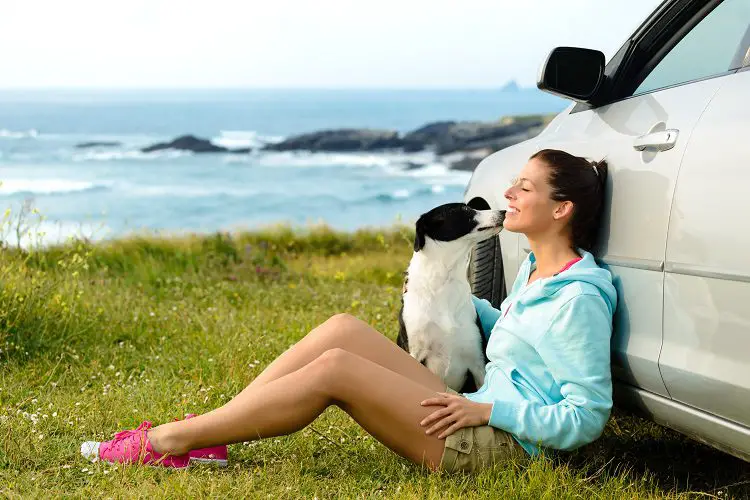
In addition to having the right dog travel gear, you need to make sure your dog is ready to handle the stresses and challenges of travel.
They can have a great time exploring new places but they still need to be safe and comfortable. Here are a few extra tips to make sure your dog can enjoy the trip without putting themselves in danger or getting scared.
Make Sure Your Dog Is Well Trained
When taking your dog out of their usual environment, there are a lot of things that can happen. All the exciting new sights and smells can distract your dog. If they’re nervous, the unfamiliar surroundings might scare them.
You need to make sure they are well trained and obedient so you can keep them safe in a new environment.
They should be able to walk calmly beside you even when they see or smell something that catches their interest. They should also be able to stop doing something at your command.
This way you can stop them from eating something they shouldn’t eat or going somewhere they shouldn’t go. If your dog has no obedience training, it’s going to be very difficult to keep them safe in a new environment.
Practice With Shorter Outings First
Before just heading out on a longer overnight trip to a new place, you should try some “test runs” by going for a short day trip to somewhere your dog has never been. See how they respond to being in an unfamiliar environment.
By testing it out before going for a longer trip, you can be better prepared for how they might behave on your trip. It is during these shorter practice trips that you can find out if your dog is the overly-adventurous type or more of the hesitant, nervous type.
Once you know what kind of a traveler your dog will be, you’ll know what you need to make sure they stay safe, comfortable, and happy.
Be Extra Alert While Travelling
When you travel with your dog, pay extra attention to their behavior and what they are doing. They will be eager to explore their new surroundings so make sure they are exploring safely and not getting into something they shouldn’t be getting into.
You also want to be on the lookout for signs of anxiety and fear. Like people, dogs have different personalities. Some are more adventurous and others are more hesitant. If your dog seems unsure or nervous in their new environment, you want to give them extra reassurance.
Bring toys, food and blankets from home to put in their dog travel kennel so that they have a familiar place to retreat to if they feel nervous. And give them extra comfort and attention so they can be reassured that you are there to make them feel safe.
Final Word
This guide has provided you with the key information about what you can expect and what you need when travelling with your dog.
There are some unique challenges that come with taking your dog on trips with you. However, that’s no reason to give up. Travelling with your dog can be a very rewarding experience for both you and your furry friend.
As long as you are prepared and get the right dog travel supplies for your trip, you can rest assured that you and your dog will be able to enjoy your trip without you having to worry constantly about their safety.
Now that you’ve finished this guide, it’s time to start digging deeper into each of the essential accessories we talked about.
You need to do some research on what kinds of products are out there and decide which ones are best suited to your unique needs and priorities. You can get started by checking out our buying guides and reviews and looking for similar expert information on other sites!
Resources:


